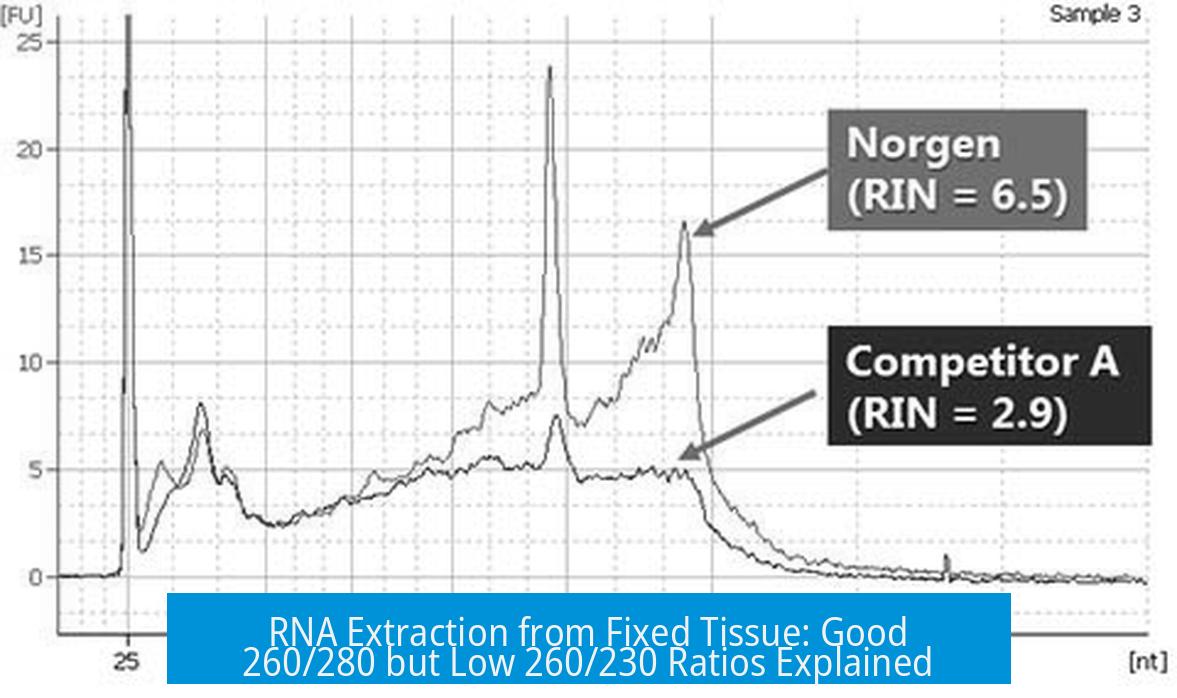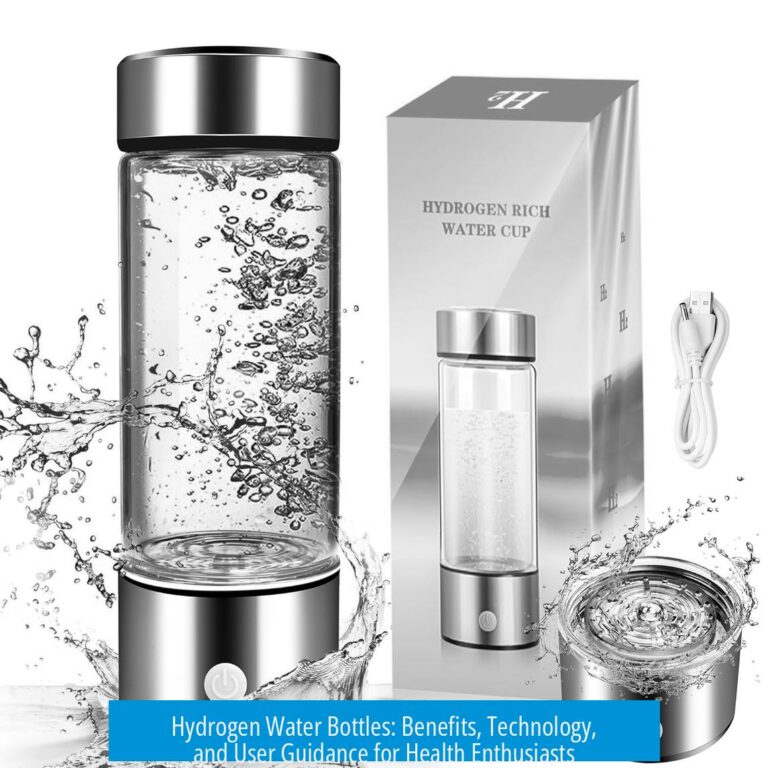RNA Extraction from Fixed Tissue: Understanding Low 260/230 with Good 260/280 Ratios
When extracting RNA from formalin-fixed, paraffin-embedded (FFPE) tissue, a good 260/280 ratio combined with a low 260/230 ratio is common and often not a cause for concern. These absorbance ratios have distinct implications for RNA purity and quality, especially in the context of fixed tissue samples.
Significance of 260/280 and 260/230 Ratios in FFPE RNA
The 260/280 ratio typically gauges protein contamination. A ratio near 2.0 indicates RNA is relatively free of protein impurities. In FFPE RNA extractions, a good 260/280 ratio usually confirms acceptable RNA purity in this respect.
The 260/230 ratio reflects contamination by organic compounds, salts, or residual extraction reagents. However, in FFPE RNA, its relevance diminishes. Contaminants unique to fixation and extraction processes often interfere with this ratio, reducing its reliability as a purity marker.
Limitations of Nanodrop Measurements for FFPE RNA
Absorbance-based nanodrop measurements provide quick estimates of RNA concentration and purity. However, the measurements are less reliable for FFPE RNA due to degradation and chemical modifications during fixation.
- 260/230 ratio often appears low despite RNA that performs well in downstream assays.
- 260/280 ratio remains more trustworthy than 260/230 but still not definitive.
- Samples with RNA concentration below 10 ng/μL yield erratic and misleading absorbance ratios.
Alternative Quality Assessment: DV200
The DV200 metric, representing the percentage of RNA fragments longer than 200 nucleotides, serves as a superior quality indicator for FFPE RNA. It better predicts RNA suitability for applications such as next-generation sequencing library preparation.
Practical Implications of Low 260/230 Ratios
Despite low 260/230 ratios, many users successfully perform qPCR and other assays. This suggests that FFPE RNA can remain functional even if this metric signals impurity.
Improving RNA Purity
If purification is desired:
- RNA cleanup kits can help, though they often mirror extraction methods with reduced salt concentrations.
- Reprecipitation with ethanol washes may enhance purification and concentration.
- Careful resuspension and handling improve downstream performance.
Key Takeaways
- 260/280 ratio indicates protein contamination; a good value suggests acceptable purity in FFPE RNA.
- 260/230 ratio is unreliable for FFPE RNA due to fixation-induced contaminants.
- Nanodrop measurements become less trustworthy below 10 ng/μL RNA concentration.
- DV200 is a more meaningful quality metric for FFPE RNA.
- Low 260/230 ratios do not necessarily prevent successful downstream assays like qPCR.
- RNA cleanup and ethanol precipitation may improve purity if needed but are not always essential.





Leave a Comment